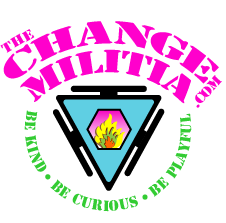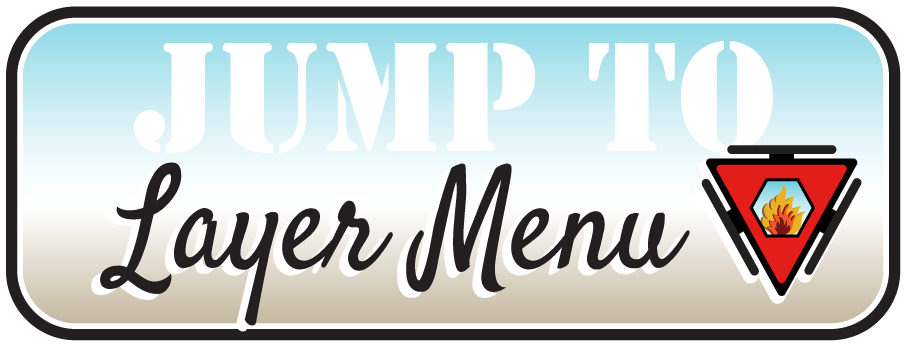Layer Ten, Week Two – Sunday
- Read Week Two Concepts
- Watch videos and read descriptions for Diffusing Internally and Five Body Resolution
- Do Movements – Diffusing Internally and Five Body Resolution
Sunday’s Focus
Make a list of your beliefs, truths, and givens. What do you think is right, good, enough, true, possible, and their opposites?
Sunday’s Concepts
To be less reactive, you must decide to release the value you place on your fears.
To do that, you will exam every given, truth or belief you hold dear. Hiding in the closet of every given/truth/belief is some fear monster. How full of fear they are determines the subconscious value placed on them. That truth value is completely subjective.
Truths include all your right/wrong, good/bad, always/never, black/white, should/shouldn’t, can/can’t, will/won’t, do/don’t, true/false, possible/impossible, and all/none.
For simplicity, let’s use the term belief but remember, the assumptions you have about others, how things will proceed, expectations, and all your givens and truths are not real. They are your subconscious mind trying to put boundlessness into a box. Beliefs are your conscious mind colluding with the falsehoods created by your subconscious mind to stifle growth, expansion, and change.
So, beliefs are the scourge of your ascension. Here is how.
Your beliefs predispose you to reaction. When you react, you shift the energy of your momentum and expansion toward the assumed threat (what you are reacting to). Every time you react, you change your trajectory away from your intention, away from growth, and away from optimal benefit.
Layer Ten, Week Two – Monday
- Read Monday Concepts
- Do Movements – Diffusing Internally and Five Body Resolution
Monday’s Focus
Track your assumptions during the day. In every moment, your subconscious mind is making assumptions. See if you can make some of those beliefs conscious.
Monday’s concepts
Beliefs limit you and limit your ability to be responsive. Your beliefs trigger reactions because your subconscious mind doesn’t allow for any middle ground. Every belief you have will arouse, promote, or instigate a reaction because your subconscious mind registers every belief as life or death and then reacts accordingly.
Let’s say you believe your soul mate must have black hair and blue eyes. For your entire life, you have known this to be true. You dismiss all possible suitors who don’t fit the criteria. They don’t qualify. You consciously discount them. Your subconscious mind sees them as a threat because they don’t fit the profile. They are unsuitable. Your subconscious mind is linear and simple. Things are yes and no. The unsuitable are a no. Life exists with the black hair and blue eyed. Life doesn’t exist without them. Your subconscious mind sees your belief as life and everything outside of that belief as not-life, death.
Every belief will limit you. Every belief will mask every opportunity that exists outside of that belief’s constraints. Every. Single. Belief.
If I believe I am a poor runner, my actions will center on that belief. I will run as if I am a poor runner. Everything that happens while I run that confirms that belief will get preferential attention. It will be exceedingly difficult to become anything other than a poor runner. I will look for poor confirmation of instead of opportunities for improvement.
My bodies will configure to meet my belief. I will think I am a poor runner, feel like poor runner, and connect to the trails as if they were my adversary or antagonist. Physically, my body will configure to confirm that belief. I will get tight, lack fluidity, and effortlessness. If I run long and often enough, I will progress regardless but I will be much more susceptible to burnout and injury.
Layer Ten, Week Two – Tuesday
- Read Tuesday Concepts
- Do Movements – Diffusing Internally and Five Body Resolution
Tuesday’s Focus
Find habits and reactions in your daily routine. Every single series of movements you make will have both. Look for the familiar.
Tuesday’s Concepts
If you believe all men are sheep, wolves, or pigs, your assumption will become your truth and you will seek confirmation of that belief in every man you meet. Seeking confirmation changes your energy configuration and that energy will attract resonate energies (pig-men). It will also repel energies that don’t resonate (non-pig males). Non Pig-males as your worldview will bring about the Pygmalion Effect. If you have pig-males as your default, the Golum Effect will ensue.
Both effects are affected by the interplay of energies. Resonate and opposing energies attract. Bullies seek the bully-able and fighters look for other fighters. Martyrs attract tyrants and despots draw dictators.
People act as pigs, sheep, bullies, martyrs, tyrants, and despots because they are afraid. They have a set of beliefs and habits, usually subconscious, which tells them that their current way of being is the only way to stay familiar, comfortable, safe, and alive. Their subconscious mind has convinced them that to be any other way is not survivable.
Your personality is the composite of your habitual reactions to everyday events. If your beliefs determine your reactions and your personality derives from those reactions, your beliefs must determine your personality.
And follow this thread … If your conscious and unconscious fears give birth to your beliefs … and your beliefs create your personality … in reality, your fears determine your personality.
Who you are being and who you believe you are is in large part dictated by what you are afraid of.
Layer Ten, Week Two – Wednesday
- Read Wednesday Concepts
- Do Movements – Diffusing Internally and Five Body Resolution
Wednesday’s Focus
Continue with yesterday’s focus. It is critical to become aware and acknowledge that the overwhelming percentage of what you do is based on habits and reactions.
Wednesday’s Concepts
Who you are being and who you believe you are … is in large part dictated by what you are afraid of.
That kind of sucks. And if your preferential movements (habits, tendencies, likes and dislikes) arise from your fears, those movements are going to be reactionary. If almost everything you do is reactionary, fear limits most of what you think, feel, do, say, and experience.
That’s a pretty bleak picture but let it sink in. You have lived your entire life with fear driving the bus most of the time (and so has everyone you know, love, or are Facebook friends with).
The world runs on false beliefs, habits based on fear, and the reaction cycle. If most of what you do is a reaction and most of what others do is a reaction, then most of what we do together is a reaction. If I react to your reaction and then you react to my reaction, we create a cycle … that repeated often enough develops into a habit that dictates the nature of our relationship.
If you do that with everyone you meet, all your relationships are reactionary. Your environmental body is primarily reactionary until you decide to make it something else.
Now, you might have the concepts above and heard a voice telling you it couldn’t be true. That not every aspect of all your relationships could possibly be based on and driven by reactions to fear-based limiting beliefs.
You might be right. You might have moments of authentic presence, times when you are fearless, fluid, and aware. What I would like you to understand is how infrequent those times are. Once you realize how often you are reactive, you will understand the cloying and debilitating nature of reactionism.
Layer Ten, Week Two – Thursday
- Read Thursday Concepts
- Do Movements – Diffusing Internally and Five Body Resolution
Thursday’s Focus
Explore and find how your beliefs and assumptions manifest themselves. Look at your list from Sunday’s Focus and list some reactions that would stem from or represent those beliefs and assumptions.
Thursday’s Concepts
Let’s look at a path out of reactionism.
First, allow, acknowledge, and accept that you are a reactive being. Second, decide that you want to be a responsive being. Third, make conscious decisions to overrule your reactive tendencies with responses that maximize opportunities. Fourth, tolerate the expansive and healthy discomfort that your responses generate.
Let’s detail each of those four steps a bit and highlight why they are vital.
Number One: Allow, acknowledge, and accept that you are a reactive being. To fix a problem, first, you must admit you have a problem. Before you can admit you have a problem, you have to allow for the possibility that the problem exists. Allowance only happens when you consciously let go of enough fear to wonder and explore.
So, Step Zero would be to make the time and configure yourself to be curious. Be curious to the “what ifs.”
What if everything you believe is fundamentally flawed, incomplete, or serves to limit you?
Actively wonder. Wonder is a state of being, a five-body energy configuration that is free of resistance, judgment, expectation, and fear. When you explore from a place of wonder, every option is visible, every opportunity has an equal value, and you are free to feel your expansive potential. Get playful with wonder, it is the most powerful state of being that exists.
Layer Ten, Week Two – Friday
- Read Friday Concepts
- Do Movements – Diffusing Internally and Five Body Resolution
Friday’s Focus
Connect your habits and assumptions to the underlying fears. Revisit the list from Sunday and explore a few of the things. Try to determine what your subconscious mind is afraid of. It will not be complex. There won’t necessarily be a story or a trauma attached to it. It will be a projected drama, trauma, or death.
Friday’s Concepts
Number Two: Decide you want to be responsive. This needs to be five body resolution. Just thinking you want to be responsive isn’t enough. You need to connect to your decision with all your bodies. Effective determination and resolve come from a balanced place. You think it while you are feeling it, energizing it, relating to it, and doing it. Successful outcomes maintain optimal balance, focus, and strength in all of your bodies.
One of this week’s movements will help. Do the Five Body Movement with responsiveness as your intention. Pick something that would typically trigger you and go through the Kriya. Begin by bringing a memory of a common trigger to mind, something that always pushes your buttons. Allow yourself a moment to mentally consider and remember it.
Next, create an alternate (responsive) scenario. Mentally change the outcome from beginning to end. Write a new story. After you have your story, repeat it as you connect your emotional body. Identify the emotions that would change or exist in the alternate scenario and allow yourself to feel them. Replay it in your mind again as you feel how the energy would have been different, feel the currents of energy swirl in the new configuration.
Replay it again as you feel it and move your body (physically act out the scene). Act out the scene again and imagine yourself interacting with your environment. Feel the temperatures and textures, the energies of the animate and inanimate objects, and the energy of whatever is triggering you. Feel yourself respond in the most healthy and beneficial way possible.
When you have that feeling repeat your Sankalpa “I will be responsive to all triggers. I will find benefit and opportunity in every situation. I will absorb all energy and then use it in the best way possible.” (Yours might be different, but you get the gist of the idea)
Number Three: Make conscious decisions to overrule your reactive tendencies with responses that maximize opportunities. Your default is to be reactive. It is what you have done and what was modeled for you your entire life. Changing your default takes not only a strong commitment but practice, lots of practice.
Your goal is to spend more of your energy looking for opportunities and less looking for confirmation of your limiting beliefs. That requires presence. Presence begins with a confirmation that you are safe and can soften. Once you are soft, you will be less reactive. From that soft space, you will feel like you have more time to respond. Softening slows your mental and emotional clocks.
Layer Ten, Week Two – Saturday
- Read Saturday Concepts
- Do Movements – Diffusing Internally and Five Body Resolution
Saturday’s Focus
Re-Revisit your list and identify some opportunities that exist outside of your beliefs. What would be possible if you let go or devalued some of your beliefs?
Saturday’s Concepts
Number Four: Tolerate the expansive and healthy discomfort that your responses generate. The expansion that being responsive creates gets uncomfortable quickly. Reactions bleed energy. When you are constantly reacting, you are constantly diffusing your vitality. It is like trying to fill a bath with the drain open.
Once you start responding, your bath begins to fill and your subconscious mind tries to convince you it is about to overflow. That is healthy discomfort. Tolerating healthy discomfort takes practice. Your responses lead to expansion, which if undiffused, generates an adaptation response.
To further immerse you in the previous example, tolerating healthy discomfort is like getting your bathtub replaced by a Jacuzzi. You can tolerate a lot more water before your subconscious mind goes into “Oh no! You are going to overflow” mode.
When you feel or realize that you are reacting, it is a sign that you are fearful, that a belief has been triggered, and that your subconscious mind is trying to drive the bus.
Feeling and realizing you are triggered as you are being triggered is a learned skill.
Respond to your reaction before the reaction has completed its cycle. An effective thing to do when triggered is to stop and do a Current150. After you establish the general state of each body, find the one that is the most reactive and out of balance. If you are reactive, you are out of balance, guaranteed.
Then do the Balancing Your Bodies movement or some abbreviated version of it. Do something that contrasts with your imbalance. If your emotional body’s energy is low, recall a fun, frivolous, and playful memory as you do some up-tempo movement like jumping jacks, Burpees, or chainsaw juggling. Feel or bring about juxtaposing energies. Put simply, move. Move in some way that is divergent, different, or contrary to your imbalance.
After you rebalance, investigate your trigger. Your initial investigation may look startlingly like blame. You might identify who or what triggered you. There is a foundational fear that lives under blame. You are afraid that another’s action or reaction will threaten your comfort zone.
To be less reactive to your fear, you need to release the value you place on it … and we will discuss that next week.
Diffusing Internally
Use this Kriya anytime the world is coming at you faster than you can manage, digest, or metabolize it.
Step 1 – First, recognize that you are in that pressured space of overwhelm or stress as it is happening, or just after, while you are still feeling the effects.
Step 2 – Second, realize where your boundary is. Where does it feel like you are holding the world/environment at bay? Do you feel it inside your body, just touching your skin, or someplace outside of you?
Step 3 – After you find your boundary, define and connect to it. Feel for its qualities. See if you can identify the images and beliefs it is triggering.
Step 4 – Next, begin to feel for the energy you are marshalling to meet the threat. What does it feel like to resist the oppressive intrusion? The energy is coming at you and you are meeting it somewhere. What does that feel like. Can you get an idea of the amount of energy you are expending to guard yourself?
Step 5 – Once you feel the amount of energy you are using to defend yourself, begin to ratchet it back. Consciously begin to lower your defenses. Gradually allow yourself to soften. Soften to the place where you let go completely of your defense.
Step 6 – Recognize, once your defenses have been lowered, that the overwhelm you felt, was the energy you were spending to protect yourself against some projected fear.
Why it Matters – This movement will give you the experience of responding instead of reacting. You will have the opportunity to feel how you create the vast majority of overwhelm and stress that you experience.
Everyday Usability – Feel stressed or overwhelmed. Do this. Allow yourself to down cycle and release your stress. Be responsive to your internal signals of overwhelm.
Progression – Try this during or just after contentious interactions. Next, try it in the middle of a conflict. After that, see if you can feel the boundary of your adversary and reduce the amount of energy you are applying. Conflict is a two-way street. Curb your aggression and take the fast lane to resolution.
Five Body Resolution
Use this Kriya anytime you want to embody an intention or trajectory.
Step 1 – State your intention clearly and succinctly. Begin to visualize as many aspects about it as you can in a couple of minutes. Connect your mental body to your intention.
Step 2 – Once you have your intention visualized, feel the beneficial and supportive emotional qualities of the intention you have visualized. Feel yourself doing or accomplishing it. Upwell the beneficial emotions that accompany your intention. Feel self-appreciation, gratitude, joy, fulfillment, and gratitude. Connect your emotional body to the mental visualization.
Step 3 – The next to connect is the physical body. Feel the physical sensations that you will feel as you accomplish your intention. And the, connect those to your visualization and emotional aspects.
Step 4 – Imagine what the energy of your successful intention. What will the buzz of participation or success feel like. Connect that to the physical, emotional, and mental bodies.
Step 5 – The last body is environmental. Feel the external sensations and visuals you will encounter. Connect those to the other bodies.
Step 6 – Once you have connected all of the bodies, restate your intention, Sankalpa, a few times as you experience it in all five of your bodies.
Why it Matters – The power of positive thinking rarely works because it overlooks the other bodies. This Kriya will seat the intention equally in all of your bodies.
Everyday Usability – This Kriya will increase your chances of success and lower your pull toward distraction. It will presence you in the belly of the intention, make it a part of you and you a part of it. Use it for any objective, goal, task, undertaking, or assignment.
Progression – Bring this Kriya with you while you tackle your intention. Use it as a way to presence yourself in the moment. If you are working in a group, connect to each person and all of their bodies. Try doing it with your associates.

















